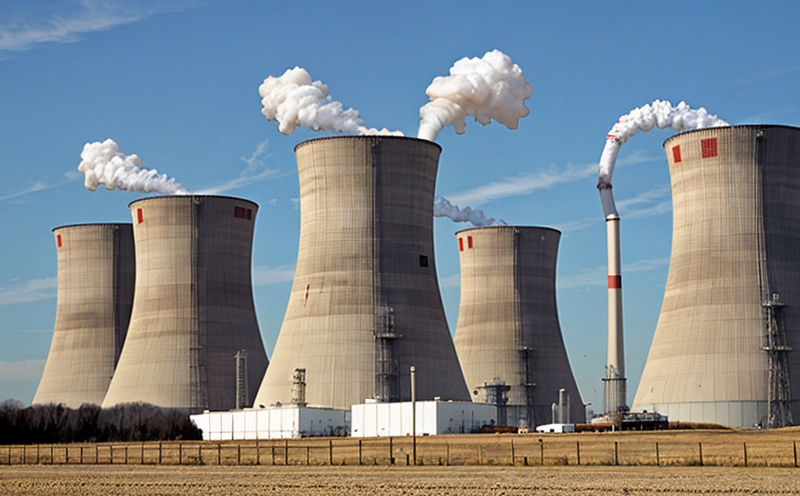Nuclear Energy Systems
Ensuring safety and reliability in nuclear energy systems is paramount. This section delves into the critical role of inspection services in maintaining these systems. Nuclear energy, a cornerstone of sustainable power generation, demands stringent quality control measures to ensure operational safety and compliance with international standards.
The inspection process for nuclear energy systems involves a meticulous approach that ensures no detail is overlooked. Compliance officers and R&D engineers play pivotal roles in overseeing the integrity of nuclear components. The sector's unique challenges necessitate specialized testing methods tailored to withstand high radiation levels and extreme conditions, often found within reactor environments.
At our laboratory, we specialize in providing comprehensive inspection services for nuclear energy systems. Our expertise lies in understanding the intricate requirements of this industry, ensuring that every test adheres to international standards such as ISO 17654 or ASTM E903. The reliability and accuracy of these tests directly impact the safety and efficiency of nuclear power plants.
The inspection process begins with a thorough review of system components, including critical assemblies like steam generators, reactor pressure vessels, and piping systems. These components are subjected to non-destructive testing (NDT) methods such as ultrasonic testing, radiography, and liquid penetrant testing to detect flaws that could compromise safety.
Our laboratory adheres to strict protocols for sample preparation, ensuring that specimens are representative of the system's operational conditions. This approach is crucial in providing accurate and reliable results. The use of advanced instrumentation and software allows us to perform detailed assessments, making our reports both comprehensive and actionable.
| Methodology | Description |
|---|---|
| Ultrasonic Testing (UT) | UT is used to detect flaws in the welds and materials of nuclear components. It provides high-resolution images that help identify internal defects. |
| Radiography | This technique uses X-rays or gamma radiation to produce images of the internal structure of components, identifying any cracks or discontinuities. |
| Liquid Penetrant Testing (LPT) | LPT is a surface inspection method that detects flaws on the surface of materials. It is widely used for detecting cracks and other defects. |
The results from these tests are then analyzed to determine compliance with relevant standards and codes. Any deviations from acceptable limits are documented in detail, providing actionable insights for maintenance and repair activities.
Our laboratory's commitment to excellence is reflected in our adherence to international standards such as ISO 17654:2019 and ASTM E903-18. These standards ensure that our testing methods are consistent with global best practices, enhancing the reliability of our inspection services.
Scope and Methodology
| Component | Inspection Scope |
|---|---|
| Steam Generators | In-depth inspection of the heat exchanger surfaces, tubing, and support structures. |
| Reactor Pressure Vessels | Comprehensive examination of the vessel walls, welds, and internal components for any signs of degradation. |
| Piping Systems | Thorough inspection of all piping connections, supports, and insulation systems to ensure integrity. |
The methodology for these inspections is designed to cover every critical aspect of the nuclear energy system. Our team employs a combination of advanced instrumentation and experienced personnel to conduct these tests with precision and accuracy.
For each inspection, we follow a standardized procedure that includes:
- Initial visual inspection of the component or system.
- Preparation of the specimen for testing as per industry standards.
- Application of appropriate NDT methods based on the specific requirements of the component.
- Data collection and analysis to determine compliance with relevant standards.
- Documentation of findings, including recommendations for corrective actions if necessary.
This structured approach ensures that every inspection is thorough and reliable, providing a solid foundation for maintaining nuclear energy systems.
| Acceptance Criteria | Description |
|---|---|
| Weld Defects | Absence of cracks, porosity, or excessive inclusions in weld zones. |
| Material Degradation | No signs of corrosion, erosion, or embrittlement that could compromise system integrity. |
| Component Integrity | All components must meet the specified dimensional and material properties as per design specifications. |
The acceptance criteria for each inspection are stringent, ensuring that only systems meeting these standards are deemed safe for continued operation. This commitment to quality is what sets our laboratory apart in providing unparalleled inspection services for nuclear energy systems.
Why Choose This Test
- Compliance with International Standards: Our tests are aligned with ISO 17654:2019 and ASTM E903-18, ensuring that your system meets global regulatory requirements.
- Expertise in Nuclear Inspections: With a team of experienced engineers and technicians, we bring specialized knowledge to every inspection.
- Advanced Instrumentation: Utilizing state-of-the-art equipment, our laboratory provides precise and reliable test results.
- Comprehensive Reporting: Detailed reports are provided with actionable insights for maintenance and repair activities.
- Regulatory Compliance: Ensuring that your nuclear systems comply with all relevant regulations and codes.
- Prompt Turnaround Times: We offer swift delivery of inspection results to keep your operations running smoothly.
Selecting our laboratory for nuclear energy system inspections is a strategic choice. Our services are designed to meet the highest standards, ensuring that you can operate with confidence and peace of mind.
Competitive Advantage and Market Impact
The inspection of nuclear energy systems is not just a technical requirement but also a critical factor in maintaining market competitiveness. Our laboratory's expertise in this sector allows us to provide services that are both reliable and compliant with international standards.
Our comprehensive approach to inspections ensures that your nuclear energy systems remain safe, efficient, and fully operational. By choosing our services, you demonstrate a commitment to excellence that resonates with stakeholders and regulatory bodies alike.
The demand for reliable nuclear energy systems is expected to grow as the world seeks sustainable power generation solutions. Our laboratory plays a vital role in meeting this demand by providing top-tier inspection services. This not only enhances your market position but also contributes positively to the global effort towards cleaner energy production.





